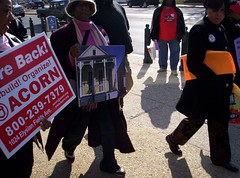By definition can urban redevelopment be sustainable?
 Green urban renewal? Image from "Breathe," by Eskew, Dumez and Ripple - New Orleans.
Green urban renewal? Image from "Breathe," by Eskew, Dumez and Ripple - New Orleans.There is an ongoing debate about urban renewal and redevelopment vs. urban revitalization. In the former, the only asset of value is land for reshaping and redevelopment. The extant buildings, organizations, businesses, and people don't matter much. Revitalization flips the equation and focuses on stabilization and extending livability, building social and organizational capital, as well as buildings and businesses. It's about livability and place.
Maybe part of urban renewal's failure had to do with its association with "modernism" in architecture, and that movement's focus on buildings as machines, and making over places into forlorn mechanistic places devoid of vitality and people.
I don't look to Hollywood celebrities for guidance on urban revitalization. That includes Brad Pitt, who is one of the "judges" for a sustainable design contest for New Orleans in the post-Katrina world.
The six final designs--voting is over today--all appear to be pretty hideous to me, with all of the "charm" of urban renewal projects from the 1950s-1980s. These days, many of these projects are being torn down, a fact of which Thom Mayne, Brad Pitt, and the other judges might not be aware.
Why does the field of architecture have so little to offer those of us concerned about the value and necessity of place and placemaking?
These designs are for the most part an abomination, and a crime that I aver requires a response. Who says the concepts of "environmental justice" shouldn't apply to the built environment?
 ACORN protest in Washington DC, February 2006.
ACORN protest in Washington DC, February 2006. They weren't protesting to save lousy boxy buildings, but places of meaning, and this meaning is constructed in part by architecture that reasonates with people's feelings, beliefs, and values.
Index Keywords: urban-design-placemaking



0 Comments:
Post a Comment
<< Home